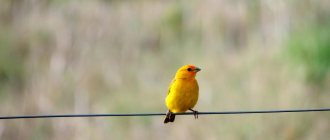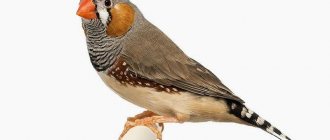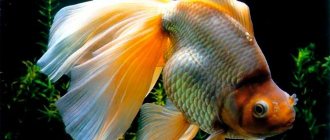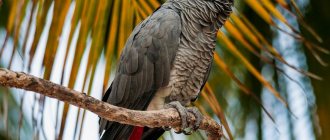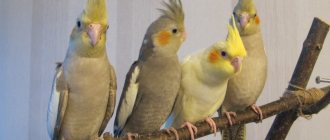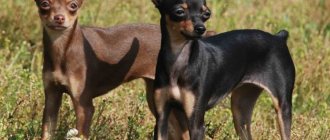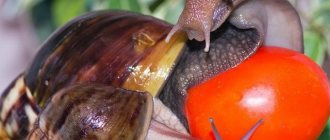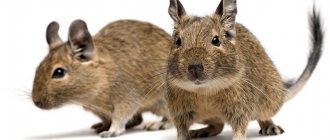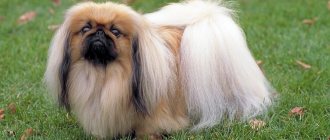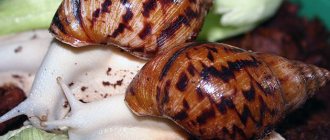general description
The macaw parrot is the most colorful of exotic birds. The coloring of this bird shimmers with all the colors of the rainbow: yellow, blue, light blue, orange, red. This is undoubtedly mesmerizing, so you can admire such a handsome man for hours.
In addition to the fact that it is the most “colored” bird of the parrot family, it is also the largest. The size of some individuals, including the tail, can reach 90–98 cm, and the span of the large pointed wing can reach 40 cm.
The large wedge-shaped bright tail is much larger than the body itself. The area near the eyes on the sides of the macaw's head is almost bare - with only a very small number of short feathers folded into a certain pattern. The special asset of this bird is its unique beak. It is very large, compressed from the sides and sharply rounded down, like a hook. But besides all this, its beak is incredibly strong.
Species of macaw parrots
Soldier's Macaw
One of the largest species, its length can reach about 80 centimeters. It got its name because of the coloring characteristic of the colors of military uniforms. Mostly the feathers are dark green, but on the head (approximately at the back of the head) they smoothly turn into blue. On the wings the outer feathers are bright blue, on the tail there are several scarlet feathers, and the main color is brown. Also neatly above the beak is a bright red wide strip of short feathers.
In captivity, it can only be kept alone, because only in this case does it begin to trust the owner and become tame and obedient. However, in small flocks the birds will remain wild. Its subspecies, the Lesser Soldier's Macaw , is a real long-liver. With proper maintenance and gentle handling, its lifespan can reach up to hundreds of years.
Blue and yellow macaw
One of the most beautiful species of parrots. Its color is dominated by two colors, as the name suggests – soft blue and bright yellow. Blue - “back side” - the upper part of the neck, wings and back. Yellow – “front side” – chest, belly, tail. There is also a green “cap” on the head.
When it comes to keeping a macaw parrot of this species, it is quite demanding and whimsical. This species is also distinguished by its intelligence and ability to impress the human voice. Despite their popularity as pets, they require constant attention and supervision.
The negative features of such parrots are their noisiness and destructive nature. They do not have the most pleasant and harsh voice, but this does not stop them from yelling all day long. They also need constant beak training, which is why they constantly gnaw on everything, including pieces of furniture, and can easily bite through even thick steel wire.
Green-winged macaw
Because of its beauty and ability to learn entire phrases, it is one of the most popular species of poultry. The color is mostly bright red, but there are blue and green feathers on the wings. The beak and cheeks are white. In combination, all this makes the parrot bright and beautiful.
In captivity he feels excellent. Possessing a calm disposition, it is not as harmful as its blue-yellow “comrade”. Thanks to his excellent intellect and memory, he can not only learn words, but also put entire phrases together from them. At home it can live up to fifty years, but does not reproduce very readily.
Red Macaw
It lives quite rarely in captivity, because it is a surprisingly freedom-loving bird. However, if you are “lucky” to have a red macaw, then be prepared for the fact that it constantly and loudly screams, and also requires free space, which, due to its enormous size, is very difficult to provide. But he can learn up to a hundred words.
Unlike the soldier's macaw, he was not particularly loved by people. Due to the fact that such birds gather in large flocks, which, like locusts, devour everything in their path, it was declared a pest. And due to its considerable size and mass, it was constantly hunted. By the way, in terms of nutritional qualities, its meat is not only tasty, but also healthy. Red macaws are one of the most numerous parrots that are found in abundance in the wild, but are practically not kept in cages or aviaries.
Chestnut-fronted macaw
Many species of macaw parrots refuse to breed in captivity, despite the owner creating the most comfortable conditions for them. Therefore, they are “bred” in the wild, periodically collecting chicks from nests and raising them at home. One of these species is the chestnut-fronted macaw, a not very large, beautiful bird whose color is dominated by green and red tones. It got its name because there is a small dark area above the beak.
Due to their small size and ability to learn - such parrots are able to remember not only speech, but also music - the chestnut-fronted macaw is quite common in captivity. But the unpleasant voice, which almost all macaws have, and a strong beak, thanks to which it can bite through wire, make keeping such a bird in an apartment problematic.
Yellow-necked Macaw
The “silent” macaw is difficult to find, but still possible. This is why the yellow-necked macaw is so common in captivity. Because of his calm disposition, he screams much less often than his brothers, and is also very trusting of his owner and obedient, like a dog. Parrots are small, the main color is green. It got its name because of the yellow “collar” on its back. It is unpretentious and prefers vegetables and corn in its diet.
Diseases
Escherichiosis
Almost every animal can get escherichiosis. The danger is that harmful bacteria begin to multiply in the body. This disease is caused by poor maintenance of a pet. An incorrect diet, a lack of necessary vitamins, a cell that is too small - all this can contribute to the occurrence of escherichiosis. It is worth noting that severe stress (for example, transporting a parrot over long distances) also contributes to the appearance of this disease.
It is not so easy to determine that a macaw parrot has contracted escherichiosis. The first symptom is diarrhea. But it can be caused not only by the proliferation of bacteria! In small chicks, symptoms include lack of appetite, drowsiness and extreme thirst. In older individuals - intestinal upset, ovarian prolapse and poor appetite.
Carefully! Macaws can eat even inedible objects. Most often, such cases lead to injury to the pharynx, which can also cause the spread of infections.
Carefully! Macaws can eat even inedible objects. Most often, such cases lead to injury to the pharynx, which can also cause the spread of infections.
Tuberculosis
Tuberculosis is a disease that develops over many months, which leads to exhaustion of the body and death. Most often, a macaw parrot can become infected with this disease through food or bacilli in the air.
The first symptoms of tuberculosis in a parrot are heavy, rapid breathing and severe diarrhea. And also - sudden weight loss, drowsiness and the appearance of tumors on the skin.
Salmonellosis
Salmonellosis is considered one of the most dangerous diseases for parrots. In addition to the fact that the disease causes death for birds, it can also be transmitted to humans. Therefore, to avoid salmonellosis, you should immediately contact your veterinarian.
A macaw parrot can become infected with salmonellosis through food or water.
Signs of the disease are severe diarrhea, swollen joints, and poor health.
Various diseases of the gastrointestinal tract
The causes of gastrointestinal diseases are poor diet. Most often, the disease occurs in parrots that eat dairy products. Also, the cause of diseases of the gastrointestinal tract can be a long hunger strike.
The first symptoms are diarrhea or a significant change in droppings, and a complete lack of appetite. If your macaw parrot's head is raised behind its back, and the parrot itself is sitting ruffled, then this is a reason to contact a veterinarian. You can take the parrot to the laboratory or have the droppings analyzed.
Features lifestyle and habitat
Parrots of this species prefer to settle in tree hollows, at a sufficient height from the ground. Pairs are created for almost a lifetime, so after the death of a partner, the bird is sad and does not try to find a replacement. The mating season varies depending on the species, but chicks are not hatched annually.
The macaw is one of the flocking birds, and almost a hundred individuals can unite in one group. Such large flocks very often become a real disaster for large fruit plantations.
The bird is very demanding about its diet, which necessarily includes fruits, berries, vegetables, nuts, herbs, plant seeds, as well as various cereals, including corn, wheat and barley. This species of bird, like most of its counterparts from other genera of macaws, lives in forested areas in countries such as Brazil, Paraguay or Bolivia. If you believe some data, then this parrot used to live in Trinidad, but eventually became extinct.
In its natural habitat, this parrot prefers to stay alone or in the company of its mate, formed during the mating season. Together they spend the whole day searching for food, while the birds spend the night on the treetops. They choose not only representatives of their own species as companions, but also golden-winged and red-winged macaws.
An interesting fact is that, unlike many species of birds, this macaw can easily cover a distance of several tens of kilometers in search of food, always returning to the place that it considers home.
Keeping at home
Some breeders claim that macaw parrots at home associate themselves with humans, trying to completely imitate the owner. Therefore, the pet’s temperament directly depends on the attitude and care of the person.
We recommend reading: Red Macaw (Macao Macaw)
Caring for and maintaining a macaw requires certain skills. He feels comfortable in captivity and experiences virtually no stress. But for beginners and lovers of silence it is better to refrain.
Home improvement
The cage for a macaw parrot must be of an appropriate size, at least a meter long and two meters wide. It is better to please a large pet with an enclosure. The presence of large natural branches, perches, and toys is required. Demanding attention, the feathered macaw bird, in the absence of its owner, will study on ropes and ladders, solving puzzles. Fans of water treatments should be provided with baths for bathing. In the absence of a cage or enclosure, it is recommended to keep animals in a free space. It must be remembered that parrots like to hang upside down and move dashingly along a vertical surface.
Diet
In their natural habitat, macaws parrots feed on nuts, fruits, seeds, and corn. In captivity they love pears, bananas, rose hips, cucumbers, and carrots. Greens – celery, dandelion leaves, sprouted grains – become an integral part of feeding. What the macaw parrot eats in nature is fatty and heavy food. But at home there is an opportunity to quickly burn calories, but not at home. Therefore, the consumption of walnuts, Brazil nuts, and pine nuts should be limited.
Education and training
The small amount of learned words is more than compensated by the ability to pronounce them in proportion to the situation. 25-30 words, onomatopoeia of a dog’s bark, a person’s laughter and snoring, and everyday sounds turns a pet into an interesting interlocutor. Any popular tune is not a burden for the macaw parrot either. It is necessary to educate and educate gently and carefully, showing genuine attention and love.
We recommend reading: Blue Macaw Parrot
Diseases
The physical and mental health of a domestic macaw parrot is influenced not only by food and the sensitivity of the owner, but also by emotional comfort. Birds can wither away alone, because they create married couples for a long time. Birds often experience weakness, peeling skin, poor coordination, difficulty breathing, and swollen joints. Timely contact with specialists will help prolong life.
Reasons for the extinction of the Macaw
- commercial fishing: Macaws are one of the most expensive birds. Since Macaws are monogamous birds, in the event of the death of one of the partners, the second one stands inconsolably over the dead parrot and at such moments it is especially vulnerable, which hunters readily take advantage of. Due to the illegal sale of birds at the first available hands, most parrots die during transportation, or as a result of stress, but most often due to inept care of exotic birds;
- the local population catches birds for food and to decorate festive and national costumes with colorful plumage;
- human changes in the natural landscape of the birds’ native area: the emergence of plantations in the place of rain forests, swamps and savannas;
- Macaws often rob plantations, so farmers are also interested in reducing the number of their “ravagers”;
- Macaws rarely breed in captivity, and in the wild this period is rare; individuals reach sexual maturity at 3-5 years;
- Chicks develop slowly and often become victims of predators or abnormal weather conditions, and there are also cases of falling out of the nest.
All these factors contribute to the gradual disappearance of entire species of Macaw parrots.
Character and behavior
In nature, macaws lead a gregarious lifestyle. There is no leader within the group, but there are separate married couples. A flock can fly from place to place, covering long distances. By nature, macaws are quite calm and peaceful, but on occasion they can defend territory and protect offspring. The chicks live with their parents for several years until they reach sexual maturity and start their own families.
This is interesting! Macaws are monogamous and are faithful to their partner throughout their lives. When one parrot of a pair dies, the second continues to sit nearby. Such devotion reflects poorly on birds: a yearning parrot becomes easy prey for poachers.
The large macaw parrot has strong paws with strong claws. The bird uses its limbs with amazing dexterity:
- easily moves along a tree trunk;
- grasping the branches, hanging upside down;
- plucks fruits from the tree with its paw and holds fruits while eating;
- tears up the ground in search of roots;
- builds a nest in a hollow.
All manipulations also involve a strong beak, which replaces the bird’s hand. The feathered giant freely cracks the hardest nuts, bites branches, and tears off bark to build a nest. With a sensitive tongue, the parrot determines the suitability of the fruit for food, easily selects the most delicious parts of the shoots, and takes out the seeds.
Character of the Ara parrot
The character of the Macaw is inquisitive, courageous, sociable and friendly not only towards humans, but also towards other pets. On average, parrots of this species in captivity live about forty-five to fifty years. But it also happens that there are long-livers who can outlive their owners - up to 100 years. Of course, Macaws are more suitable for circuses and zoos; they very rarely live in apartments. But this is no exception. It is enough to have a strong desire for exotic animals, the patience to keep them and a certain amount of money.
Keeping a macaw parrot
Choosing a cage for a macaw is not so easy. For such a large parrot, the cage size cannot be too large. The minimum cage size for a macaw should be such that the bird, sitting on a perch, can freely open its wings and flap them.
The best option for keeping a macaw parrot in the house would be to arrange an aviary where the bird can not only spread its wings, but also fly a little. However, only owners of large houses can afford this, because the optimal size of the enclosure is approximately 8x3 meters and 2 meters in height. When purchasing a cage or arranging an aviary, you will need the appropriate equipment: perches, drinking bowls, feeders and toys, taking into account the size of the feathered pet.
In their natural habitat, macaws feed in trees and do not come down to the ground to do so. This fact should be taken into account when choosing the mounting height of the feeder. But this applies to recently imported individuals, while parrots adapted to new conditions are less whimsical in this matter.
Caring for a Macaw Parrot
The basis of all the basics of caring for parrots is cleaning and disinfecting the cage or aviary.
Daily care for a macaw parrot includes:
- washing the feeder and drinking bowl before each feeding and water change;
- If paper is used to cover the tray, it should be changed daily.
Sometimes special sand and sawdust are poured onto the tray, which are changed as they become dirty, but at least 1-2 times a week, unless otherwise provided by the manufacturer of these hygiene products for birds.
Once a week, the cage is washed completely, including all equipment, toys, branches, using a brush and a special detergent, after which everything is thoroughly rinsed with warm water. By the way, as an excellent disinfectant, you can use an infusion of chamomile or wormwood, in which you soak a sponge and wipe the cage.
Carnivores or birds of prey
This group includes birds whose diet consists primarily of the meat of rodents, mammals, fish, insects, other birds, amphibians and reptiles. Birds of prey may hunt their prey or eat dead carcasses. Some carnivorous birds include hawks, falcons, eagles, ospreys, vultures, owls, etc.
Carnivory is a general term used to describe a diet of animal meat, however there is a more specialized diet that requires birds to eat specific types of meat, including:
Piscivores, or ichthyophages
The diet of ichthyophages consists mainly of fish, but may also include aquatic insects, mollusks and crustaceans. Many birds in this category have specialized beaks and strong claws that help them capture their prey. Some bird species that are classified as piscivores include ospreys, terns, cormorants, albatrosses and penguins. Herons, pelicans and gulls are also considered to be partially piscivorous.
Insectivores
Insectivores are various species of birds whose diet primarily consists of insects such as: aquatic insects, flying insects, ants, spiders, grasshoppers, caterpillars, dragonflies, butterflies and many others. These insects are an important source of protein for most birds and especially for young chicks.
There are many birds that are considered insectivores, although they eat more than just insects, as their diet is dominated by these invertebrates. Some species choose to feed exclusively on insects at certain times of the year when other food is not available. Birds that are predominantly insectivorous throughout their lives include bluebirds, dippers, flycatchers, swallows, warblers, woodpeckers and wrens.
Ornivores
The diet of poultry eaters consists mainly of meat from small birds. Both large and small birds of prey can eat other birds. They are agile flyers with strong legs and claws that are capable of catching and holding their prey. Examples of such birds are peregrine falcons and hawks.
Molluscivores
The diet of these birds consists of eating large quantities of shellfish such as snails, oysters, mussels and slugs. Many molluscivores have sharp beaks and strong jaws that help them find and capture prey and crack hard shells. Birds that feed on shellfish include oystercatchers and kites, and occasionally ducks, coots, dippers and spoonbills.
Snake-eaters
The diet of serpent eaters consists mainly of snakes. Such birds have quick reflexes and sharp claws for catching snakes. Snake-eating birds include: the secretary bird, black snake-eater, heron and representatives of the raven family.
Diet: what to feed?
These birds prefer variety. A mandatory point is the feed base - these are sunflower seeds, wheat, hemp, etc. If the owners decide to feed ready-made food, they need to choose products prepared specifically for large parrots. 50 grams per day will be enough for one medium-sized individual. However, this is not the only food that a macaw parrot should eat.
Choose fruits and vegetables for your pet. It doesn’t matter what they are, it is important that they are of high quality. They should be given whole, or divided into small pieces. Cereal dishes, such as porridge, are suitable for this type. You can prepare 2-3 spoons of this hard-boiled dish.
Parrots need calcium to strengthen their beaks and bones. It can be found in cottage cheese and eggs. But, nevertheless, the presence of mineral supplements in the cells is mandatory. It can be chalk, pebbles or shell rock.
To pamper your pet, you can give him branches of fruit trees. It is important that your pet constantly sharpens its beak, otherwise it will lead to bad consequences. As a daily way to sharpen your beak, you can suggest birch branches - an environmentally friendly material with good density.
Prohibited Products
In order for your pet to please its owner with cheerful chirps and excellent health, you should adhere to some dietary restrictions. The following vegetables are harmful to birds:
- eggplant;
- onion;
- garlic;
The following fruits are harmful to the bird's body:
- persimmon;
- avocado;
- mango;
Fragrant herbs are not suitable for bird feed:
- dill;
- parsley;
- cilantro;
You should not use branches to sharpen the beak:
- lilac;
- oak;
- acacia;
- poplars;
For indoor birds, houseplants and flower crops are dangerous:
- hyacinth;
- dieffenbachia;
- ivy;
- azalea;
- indoor fern;
There are disagreements among the breeders of these birds over bread. There is an opinion that this product is harmful to parrots. Zoologists say that birds can eat bread, but in small quantities. Occasionally you can treat the bird to white wheat bread.
Raising feathered pets is a fun and positive experience. Only complete and reliable information about what to feed budgies will save your pet’s life.
Birds are a class of animals that includes a large number of different species (more than 10 thousand). Each of these species has its own dietary preferences. They depend on the habitat, the size of the bird, its strengths and abilities, as well as the abundance of food, needs and competitors.
Most bird species can be divided into 3 categories based on their diet:
Macaw breeding
Currently, the macaw regularly breeds in captivity if there is sufficient space and all necessary conditions are met; its breeding does not present any particular difficulties. To achieve successful breeding, each pair of macaws is kept separately from the others; only the blue-fronted small macaw can be successfully bred in group keeping. The breeding season begins in April - parrots become aggressive and can even attack the person caring for them.
There are from 1 to 3 eggs in a clutch. Quite often, some of the eggs may not be fertilized. The incubation period is 25-27 days, the period of feeding the chicks is 12 weeks. You can look into the nest box only for control, and only occasionally, otherwise excited parents can destroy the eggs or chicks. The young remain with their parents some time after leaving the nest.
Since macaws tend to ruin things, it is important that the nest box is strong enough. For large species, reinforced barrels mounted on durable stands are suitable. The nest box must be located in such a way that it can be checked without entering the aviary (cage) with the birds. In areas with cold climates, breeding of the red macaw occurs more successfully in a closed (indoor) cage than in an outdoor enclosure.
Owner reviews
Maksim
A large parrot is chosen for life, it can outlive you, so the choice of a bird must be taken very seriously. The macaw requires a lot of space, the ideal option is an aviary or open spaces and a house. The birds gnaw all wooden furniture with their strong beaks. They cannot be installed in panel high-rise buildings. When a parrot doesn’t like something or is bothered by something, it screams very loudly and shrilly. Neighbors and even passersby on the street hear it. I do not recommend having a parrot in families with small children or pets. My parrot bent the copper hook on the door with its beak, so it can be dangerous, especially during the mating season.
Leah
I lived with a friend, and I still remember it like a bad dream. You need a separate room for it in a good way. You need to let him fly, have a large aviary. Parrot + aviary - -200 thousand will cost approximately. Their beak is very powerful; it can bite through copper wire several mm thick, and even more so a finger. So if the parrot has a quarrelsome character, it won’t seem too bad. Litters, yells, can chew baseboards, wallpaper, etc. So in the worst case scenario, you will have a pigsty at home. I keep wavy ones, and I brought them to work. Having a macaw at home is like having a monkey)
momSprings
you can go broke with Ara. And it’s practically impossible to buy from us, they don’t need to eat seeds - millet, like wavy millet, but fruits every day, but they crap %), they definitely need a room, they are so large with a winged span of up to 1 meter. %)
Pianist
I am one of those who don’t know (I had several parrots at different times, but not a macaw), but I can tell you a little. Owning a macaw is a big responsibility. This is not a wavy one. You need to spend money on a cage in which he will be spacious, make him a tree with toys, read a lot of literature in order to know exactly what they can eat, what they cannot eat, what their daily routine should be. You need to spend time on them, keep them busy. They must fly a lot. Parrots have a very vulnerable psyche, especially those that are so big and smart. You need to be careful and patient with them. But macaws are not only handsome, but also very smart. But at the same time, pay attention to their beak: I have heard of cases where macaws bit off the fingers of their owners. This does not mean that they are all doing it en masse, but we must remember that they are capable of it.
icyliquidsky
Our close friends live with a macaw - for me this was the first time I encountered a parrot. He will also be the last - I have never met a more bitchy creature - angry, constantly yelling, terribly willful and stubborn, bites (very painful by the way!). Just a plague, not a pet. They have had him for 6 years and they love him very much, but a year and a half ago they had a child, and the parrot reacted extremely negatively to the appearance of a child in the house. In general, of course, they don’t raise their hand to give him away (almost a family member, albeit a disgusting one), but it is extremely difficult to exist with him. Having such an animal as a pet seems to be a dubious joy.
Video
Where do parrots live and what do they eat in the wild?
It is known that parrots naturally live near the equator and in southern latitudes. Exotic birds love warmth and sun rays, so they prefer subtropical and tropical climates. There are 350 species of parrots, all of them inhabit the southern parts of the globe: Australia, Latin America, Africa, and South Asia. Let's look at several species, their habitats and lifestyle features. Let's start with the brightest representatives of the avian elite - the macaw.
Macaw
The homeland of the spectacular multi-colored parrot is the continent of South America. Each species of the macaw genus lives in different climatic zones: one chooses dense tropics, another chooses savannas, and the third is found in mountainous areas. Living conditions in individual parts of the continent are radically different: the humid jungle of the Amazon River, the dry Brazilian savannas, the mountain peaks of Peru with thin air. Parrots living in a particular area adapt to its environment. Macaws especially appreciate the presence of tall trees - there they spend most of their time, free from searching for food.
In Latin American countries it is warm all year round and there is no shortage of feed. The harvest ripens continuously, and there is always some kind of food on the macaw's menu. What do these parrots eat in the wild? Macaws are herbivorous birds; they are able to feed on any edible plants:
- fruits;
- flowers;
- seeds;
- nuts;
- young shoots of bushes;
- roots of herbs.
Did you know? The macaw's favorite delicacy is juicy fruits, from which it extracts seeds with its beak and throws the torn pulp to the ground.
Budgerigars
Small representatives of the family - budgerigars - can be found in nature on the smallest continent. Australia is their habitat. Only in this region do huge, noisy flocks of feathered nomads live and breed. They move throughout the territory, staying in one place as long as there is food and water there. Dry periods give way to rainy seasons, but such difficult conditions do not frighten the hardy birds.
Flocks of green budgerigars can be found near bodies of water, which practically disappear during drought. Wavys can withstand a lack of water and food, but in times of famine they visit farm fields. Birds eat grass seeds, which they can swallow completely. They feast on fruits and soft nuts. Birds feed little by little all day long - they have an accelerated metabolism and require a lot of energy to move.
Lovebirds
So, we talked about where tiny budgies live. Now it's the lovebirds' turn. The African tropics and the island of Madagascar are the habitat of these birds. They form flocks and stay close to bodies of water. They fly well, run quickly and move deftly through trees, clinging to branches with their beaks. They feed on plants: seeds, shoots, buds. They nibble grass, gnaw fruits and berries. They do not disdain insects.
Important: lovebirds are very smart and careful. Their self-preservation instinct is at its best. They will never try suspicious fruits of unusual color and shape.
Jaco
The gray gray parrot lives in West Africa (Congo, Guinea, Angola). Selects mangroves and forest thicket. Does not like open spaces. It moves awkwardly and with difficulty on the ground, but feels confident in the air. Tall trees with dense crowns are suitable for him to spend the night. These birds make nests in hollow tree trunks, where they breed and feed their offspring.
Jaco is a medium-sized parrot. He eats up to 100 g of food at one time. During times of food shortage, the family community flies to the grain fields, destroying the harvest. The Gray's powerful beak easily cracks hard nut shells and crushes juicy fruits. An impressive part of the diet of a wild parrot is occupied by oil palm fruits.
Laurie
The tree parrot is a cheerful and elegant bird. She lives in the Philippines and Indonesia, in northeastern Australia, where eucalyptus trees predominate. Gathering in a small family, lorises settle in forest thickets and nest in hollows. The bright color does not prevent parrots from camouflaging themselves in flowers and foliage.
Lori parrots spend a lot of time feeding due to their diet. It is strikingly different from the food that is familiar to other members of the family. This is soft food: resins, fruit juice, nectar, pollen. Moving between flowering plants, lorises drink nectar, thereby promoting pollination. 5,000 species of flowers provide food for small birds.
Long-billed Emerald Parrot
This bird is nicknamed the rock parrot based on its habitat. The only territory where this parrot lives is the mountainous country of Chile. Flocks of green birds inhabit forest areas on mountain slopes. The long beak is adapted for digging suitable food from the ground. With the help of its beak and strong claws on its paws, the bird breaks the soil, extracts edible roots and plant tubers. Perhaps this is all that is interesting about the long-billed emerald parrot.
Kakapo
A unique parrot living in New Zealand. Inhabits humid forests, hills and plateaus. Due to its weak wings, the kakapo cannot fly, but it climbs trees well. A heavy beak and flat, wide paws help him. It goes down in jumps, balancing with its wings. During the day it hides in a hole, and at night it comes out in search of food. The structure of the kakapo's beak allows it to grind food, so the bird is characterized by chewing movements. Kakapo in their natural environment feed on plants, leaving behind trampled soil. Feeds on berries, juice, seeds.
Kea
The kea parrot, also known as nestor, lives on the South Island of New Zealand. This is the only mountain parrot that has adapted to living at altitudes of up to 1500 meters. He doesn’t care about harsh conditions: low temperatures, fogs, snow drifts. An intelligent, inventive bird stays near people and goes to tourist centers and campsites.
The best place for kea to live is an area with garbage cans. On snow-covered ground it is difficult to obtain the usual food, and Nestor does not disdain food waste. During periods of particularly severe famine, kea attack sheep and peck out the subcutaneous fat.
This is interesting! Local residents gave the pest parrot the nickname “sheep killer.” The bad reputation of the insidious bird caused many years of extermination of the population, as a result of which the species was listed in the Red Book.
Amazon
Why does this parrot have such a name? It is associated with the region of distribution - these birds inhabit the Amazon River basin. In addition, the Amazons partially settled in the Antilles and a small area of Central America. A humid, hot and difficult climate is not a hindrance to birds; they easily adapt to any conditions. Amazons, who cannot stand loneliness, tend to form large flocks. This is how they live, in communities where everyone is related to each other. The bird's menu consists mainly of berries, buds, flowers and seeds.
So, we found out that parrots live in southern countries with a warm climate. The vast majority of varieties are found in Australia, a third in South America, and the rest in Asia and Africa. Their usual habitat is deciduous forests. All parrots feed on plant food and lead a collective lifestyle.
The food spectrum of birds is wide and includes a variety of plant and animal foods. The geographic distribution of birds also largely depends on the nature of their diet. When searching for food, the main importance for birds is vision, partly hearing (forest and nocturnal species), and sometimes touch (waders, ducks, flamingos). The vast majority of birds obtain food on the ground or on plants, a minority - in water or air (on the fly).
Based on the variety of feed used, birds are divided into three groups. Polyphages (omnivores) feed on a variety of plant and animal foods. This group includes representatives of approximately a third of all families, and within each family, omnivory is more pronounced in larger species. An example would be large corvids, large gulls, cranes, etc.
The opposite group are stenophages - birds that consume uniform food and use uniform methods of obtaining food. Stenophagy is rare among birds. These include swifts and many nightjars, which feed only on flying insects, and swallows. This group also includes typical scavengers - vultures and marabou, as well as species that feed mainly on large fish - pelicans, osprey, cormorants, etc. The African palm vulture feeds on the fruits of several types of palm trees; The slug-eating kite eats only shellfish. Some species of small hummingbirds, honeyeaters, sunbirds and Hawaiian flowerbirds feed on the nectar of flowers of a limited number of plants. Crossbills feed on the seeds of coniferous trees.
Most birds belong to the intermediate group and eat a fairly wide range of different foods. These are many passerines that feed on insects and seeds; green parts of plants, seeds, berries and invertebrates - galliformes, toucans, hornbills, etc.
Based on the composition of their food, birds are also divided into a number of ecological groups. Species feeding
mainly plant food - phytophages. The hoatzin feeds almost exclusively on leaves; geese, swans, some ducks, and coots feed mainly on a variety of coastal and aquatic vegetation, simultaneously eating aquatic animals. Many passerines feed primarily on seeds - weaver birds, finches, larks, etc. Many parrots, pigeons, turacos, mouse birds, many trogons, and birds of paradise feed on seeds, berries and fruits. However, most of these birds feed their chicks primarily with animal feed.
Species that feed primarily on animal foods are called zoophages, although many of them also eat plant foods to a small extent. Almost a third of all bird families are exclusively or predominantly insectivorous (entomophagous). However, almost all birds feed on insects to one degree or another. Many aquatic and semi-aquatic birds feed primarily on fish, while also eating aquatic invertebrates. Many birds of prey and owls feed on small rodents. A few raptors, such as the peregrine falcon, hawks and hobby, marsh harrier and some others, feed mainly on other birds. A small number of bird species feed on shellfish (eg arama). Herpetophages that feed on amphibians and reptiles include the snake-eating eagle, the secretary bird, cariamas, some large kingfishers (kookaburras), etc. Some gulls and storm petrels are coprophagous - they can eat the droppings of cetaceans and pinnipeds. Monkey-eating harpies catch monkeys and sloths, while the red-throated falcon and wide-mouthed kite prey primarily on bats. The Malayan egg-eater steals eggs from the nests of other birds.
Due to the seasonality of the availability of different types of food, many bird species are characterized by seasonal changes in nutrition. Often the transition from one feeding regime to another depends on the availability of certain food, which is especially typical for wintering and migratory birds in the northern hemisphere. Many large-ranging birds exhibit marked geographic variability in their diet depending on the availability and availability of certain foods. Some bird species tend to hoard food. The storage of food is complex in the pygmy owl and the horned owl, which in the fall store captured rodents in hollows. The nutcracker collects pine nuts and then hides them in hollows, etc. Jays hide acorns among fallen leaves, in stumps, hollows, etc. The acorn woodpecker from the USA hollows out holes in tree trunks into which it hammers the acorns it collects. Up to 60 thousand acorns hidden by him were discovered in one yellow pine tree. Such food reserves are used by birds in winter.
Small birds need relatively more food than large birds. The mass of food consumed by small passerines per day is 50-80% of their mass. Birds of prey weighing about 1.5 kg need 150-200 g of meat, but having caught large prey, they can eat up to 800-1000 g. Small birds die without food after 15-30 hours, pigeons - after 7-9 days, large ones eagles and owls can go hungry for up to a month.
Birds' need for water is expressed to varying degrees. The skin evaporation of birds is insignificant, in addition, water from the urine is absorbed back when the urine is in the upper part of the cloaca. Many desert and steppe species can go without water for months (for example, jack, desert warbler). However, most other species require water in their daily diet. Seabirds can drink seawater thanks to special glands that remove excess salt. Most birds scoop up water with their beaks and raise their heads to let the water flow down their throats. Some species, for example, pigeons, sandgrouses, mousebirds, triplets, bustards and others are able to draw in water without the need to tilt their heads back. Many species of sandgrouse (black-bellied sandgrouse, South African sandgrouse) bring water to their chicks not only in their beaks, but also on their belly feathers, which, due to their structure, have the ability to retain water.
come back

